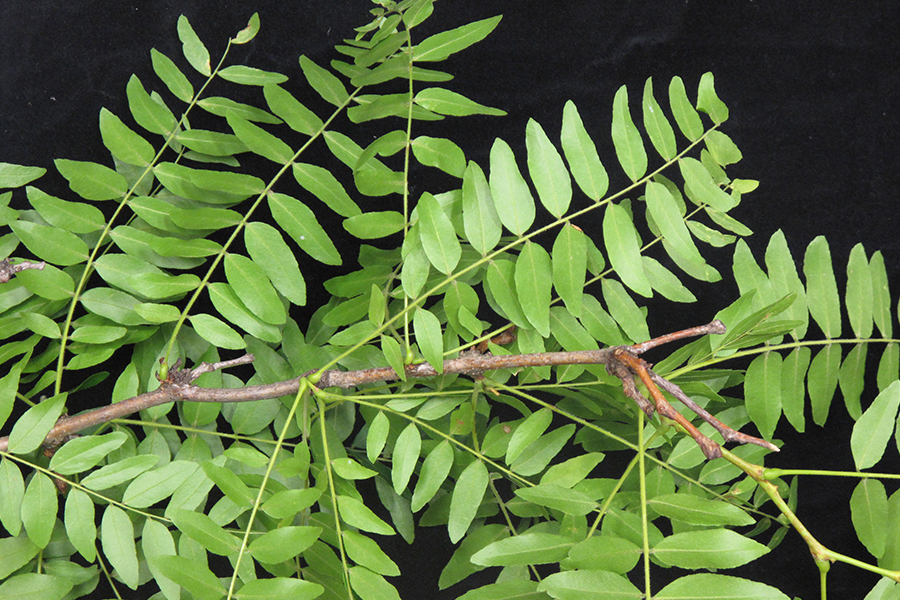Gleditsia triacanthos var. inermis
Honey locusts are large deciduous trees in the legume family with small leaves, pod-shaped fruits, and large thorns. Incredibly tough by nature and requiring minimal clean-up, honey locusts are one of the most planted trees in street tree plantings.
Location
The Hadwen Arboretum is home to one honey locust right at the Lovell Street entrance.


History at Hadwen
There are no formal records of honey locusts in the Hadwen Arboretum until 2020 and the species was not referenced by Hadwen in any known documents.
Keep Learning
Detailed Species Information
Honey locust is a deciduous tree in the family Fabaceae, native to the central United States. A fast-growing tree, honey locusts typically reach heights of 65–100 feet (20–30 meters). In the wild, honey locusts have large thorns that grow out of branches and the base of the tree. These thorns are 1–4 inches (3–10 centimeters) in length, hardening with age, and are commonly believed to have evolved to defend the tree from the now-extinct megafauna. The bark of the honey locust is dark gray and forms fissures with maturity. The leaves of the tree are pinnately compound. Each leaflet is ⅕ to 1 inch (1.5–2.5 centimeters) in length and vibrant green in color. In the fall, these leaves turn a range of vibrant yellows. Honey locusts have small, off-white, male and female flowers on separate trees that emerge in late spring. The fruit of the honey locust is a large, twisting pod typical of those in the legume family.
Honey locust is an adaptable species and can thrive in many environments outside its native habitat, which consists of rich, moist river valleys. A pioneer species, the honey locust can be found in disturbed areas, overgrown fields, and fence lines. It is so hardy that it can become invasive in some areas; for example, in Australia, honey locust has become a major agricultural weed, forming thickets in waterways and pastures.
The wood of the honey locust is strong, rot-resistant, and workable but not particularly commercially available. It has been widely cultivated and planted on campuses, streets, parks, and gardens. It is extensively used in urban forestry due to its tolerance to salt, heat, drought, and compaction, as well as small leaflets that require minimal cleanup. The most commonly planted cultivar of honey locust is Gleditsia triacanthos var. Inermis. This cultivar is a thornless variety that lines streets in many United States towns and cities.
